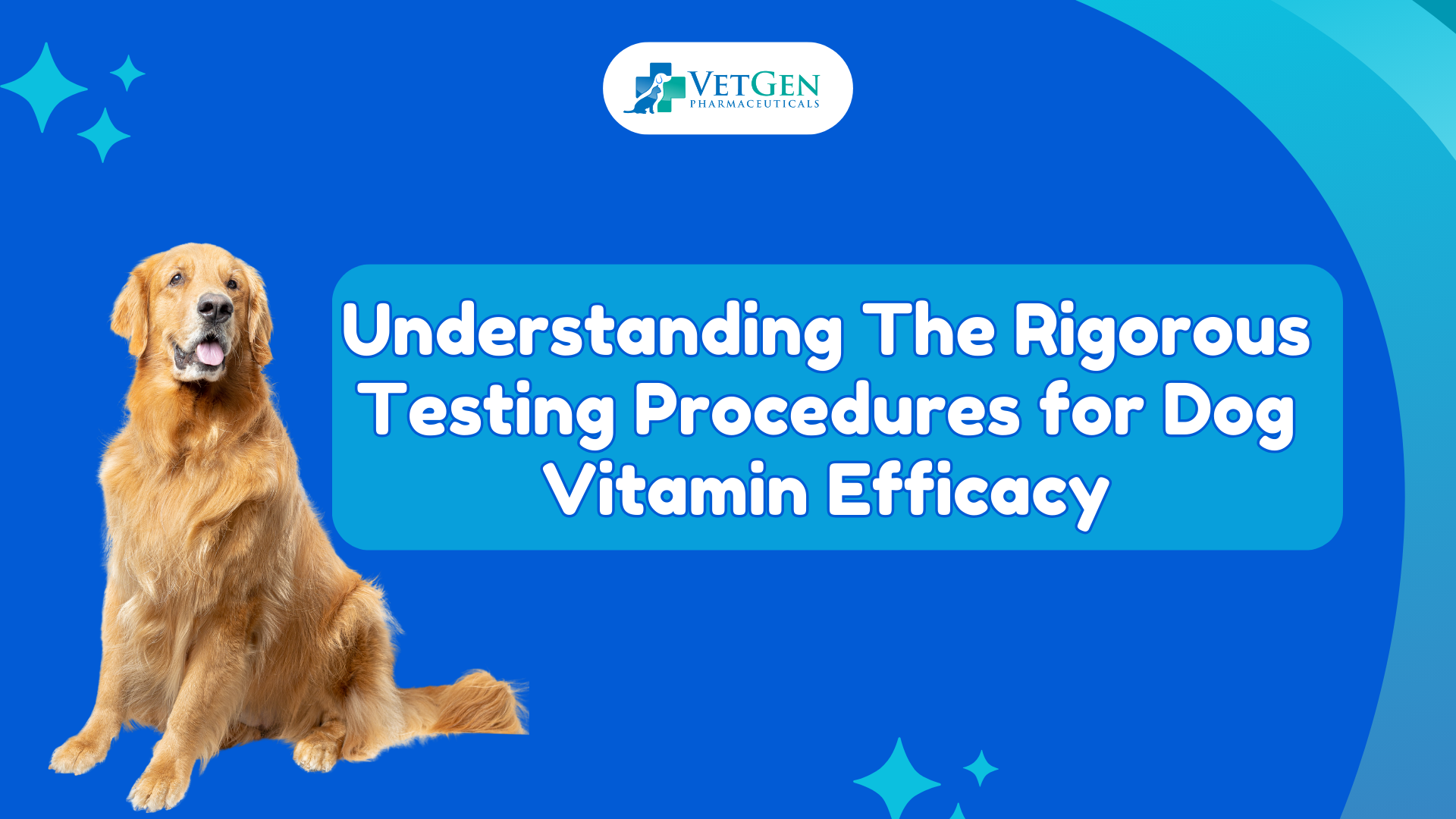There’s a ton of science and rules behind ensuring that our pups get only the best. By implementing these testing procedures, we highlight the importance of quality control and scientific validation in dog vitamins and nutritional needs.
This whole system ensures that we pet owners have access to safe, effective nutritional supplements for our dogs. It gives us that peace of mind that we’re doing our best for our pet family members.
Nutritional Requirements of Dogs:
Every dog has different needs in accordance with life stage or breeds. Puppies need more energy-producing vitamins like B-complex and D for bone growth. Senior dogs benefit from increased vitamins E & C, supporting immune function and inflammation at their age.
Same with large breeds, which need specific adjustments in their nutritional intake to support joint health. While small breeds require a different balance to maintain energy levels and metabolism. We need to cater to these varying needs with different nutritional supplementations.
What are the types of vitamins dogs need?
The importance of vitamins in canine health is much like that of humans—a balanced mix of vitamins for overall health and well-being. Mainly vitamins fall into two main categories. One being water-soluble vitamins, such as the B-complex and vitamin C, which must be consumed as they are not stored in the body. Another is fat-soluble vitamins, including vitamins A, D, E, and K, which are stored in the body’s fatty tissues and liver.
Apart from these Natural sources there are synthetic sources of vitamins, too. Both are effective. But natural sources are always better preferred for better absorption and safety. On the flip side, they sometimes require a larger volume to achieve the same effect as synthetic versions.
Read Understanding Dog Nutrition for a more detailed study.

Supplement Forms for Dogs:
Dog vitamins come in various forms. First, there are pills, which help us be more precise in dosage. Chews are easier for dogs to eat and have varying ingredients. Liquids offer flexible dosing and are easy to mix with food. Lastly, powders are easily incorporated into meals. In all of these, we need to keep the dosage in mind before administering it.
How to measure vitamin efficacy in dogs?
Just like humans as every dog is different the efficacy of vitamins in dogs significantly depends on their bioavailability. A dog’s digestive health can affect how well vitamins are absorbed. While certain vitamins and minerals can enhance the absorption of others, while some might inhibit it. For instance, high calcium levels can interfere with vitamin D.
Whether the vitamin is delivered in a chelated form or not also impacts its bioavailability.
Measurement Methods:
Many of us might be now asking ourselves, how to measure this efficacy. Bloodwork analysis is a direct method for determining the amount of specific vitamins and nutrients in the bloodstream. It indicates absorption levels. Physical health indicators include the dog’s skin and coat condition, and muscle tone. Shiny, thick, and healthy-looking fur, is a visible sign of adequate vitamin intake, especially vitamins A and E.
Sometimes we also encounter behavioral signs including changes in energy levels and activity. It can also hint at the effectiveness of dietary supplementation administered.
Regulatory Standards and Guidelines
Food and Drug Administration (FDA)
As a pet owner, it’s comforting to know a watchdog is looking out for the well-being of our pets in the vast market of pet supplements. Every product must adhere to specific guidelines that dictate everything. From ingredient purity to the manufacturing processes. Moreover, the FDA mandates adverse event reporting. It is an important system that tracks pets’ negative reactions to supplements.
The Association of American Feed Control Officials (AAFCO)
Another watchdog is AAFCO which helps pet owners like us make informed decisions. They set the gold standard for pet food and supplement nutrition through their nutrient profiles and feeding trial protocols.
While AAFCO doesn’t directly endorse products, its guidelines benchmark nutritional adequacy and quality. They have clear nutrient profiles and rigorous feeding trials. AAFCO helps ensure that the products on the market meet the specific dietary needs. They provide us with that important framework that allows pet owners to make informed decisions about what we’re feeding our dogs, ensuring they get the right balance of nutrients!
Testing Procedures for Vitamin Efficacy for Dogs
While trying to figure out if dog vitamins work, setting up clinical trials is like organizing a science experiment to support it. We mix things up randomly and split the pups into different groups where some get the vitamin, some doesn’t. Sometimes, even keep who’s getting what a secret! These designs are crucial for producing reliable data on dog vitamins’ effectiveness. Isn’t it cool how we borrow tricks from human medical research to look out for pets.
Spotting the right biomarkers is another way to finding clues about the affectiveness of these vitamins. Showing how well a vitamin is being gobbled up and used by dogs’ bodies. Tracking down these indicators helps us see if those vitamins are not just being eaten but actually doing their job.
Statistical analysis is the backbone of validating the results of vitamin efficacy trials. After we get all the data from the vitamin trials, it’s time to do data interpretation and significance testing.
Statistical analysis is all about figuring out if the changes we see like shinier coats are actually thanks to the vitamins or just a fluke. It Helps us figure out if we’re really onto something real or just chasing our tails.
Safety and Toxicity Testing
Acute vs. Chronic Toxicity in Dogs
When we’re testing dog vitamins for safety, we need to check both short and long term affects.
if anything goes sideways quickly after a dose its acute toxicity. For instance, your dog may have an immediate tummy upset right after a treat.
While in the long run, ie. chronic toxicity, it is to check that weather a vitamin over time is slowly building up and causing problems. Some issues only show up after a while, and we want to avoid any bad surprises down the road.
Common Side Effects
Just like people, dogs can have “off” days with new vitamins — maybe a bit of a bellyache or acting a little out of character. Spotting these side effects quick and knowing how to manage them does the trick. It’s about understanding what’s a no-big-deal reaction and what’s a red flag! Keeping an eye on our pups and knowing how to tweak their supplement routine keeps them healthy.
To Conclude…
Let us wrap up the whole story of how dog vitamins get tested. It’s a mix of serious science, strict rules, and slight detective work. With all the checks and balances from the FDA and AAFCO, plus those GMP stamps of approval, we can be confident that the vitamins we’re giving our pet dogs are safe to consume. It’s all about keeping our dogs jumping around with vitality with every vitamin-packed bite.






